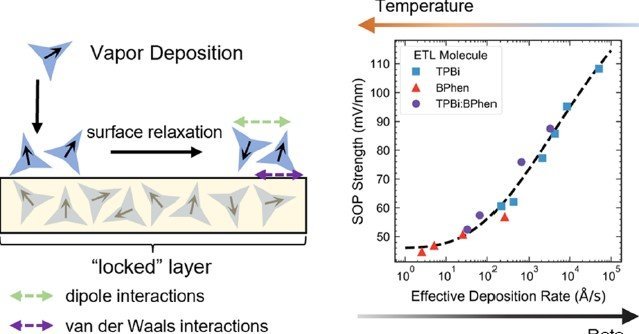Process Engineered Spontaneous Orientation Polarization in Organic Light-Emitting Devices
CS Appl. Mater. Interfaces 2023, 15, 1, 1652–1660
https://doi.org/10.1021/acsami.2c17960
The presence of spontaneous orientation polarization (SOP) in the electron transport layer (ETL) of organic light-emitting devices (OLEDs), induced by the alignment of polar molecules with permanent dipole moments (PDMs), can reduce device efficiency by quenching excitons.
This work quantitatively examines SOP formation in the ETL, considering the impact of film processing conditions and treating the vapor-deposited film as a supercooled glass. The results provide a framework to predict the SOP formation efficiency for polar materials and blends, and in situ measurements reveal that SOP-induced exciton-polaron quenching can be mitigated through optimized processing conditions, leading to improved OLED efficiency.
Optical Outcoupling Calculations. Light outcoupling efficiencies (ηoc) for OLEDs of interest were calculated using the simulation results obtained from Setfos. During the simulation, an isotropic dipole orientation was assumed, and optical constants measured via spectroscopic ellipsometry were used. The IQE for each device is calculated by dividing its ηEQE by its corresponding ηOC.

